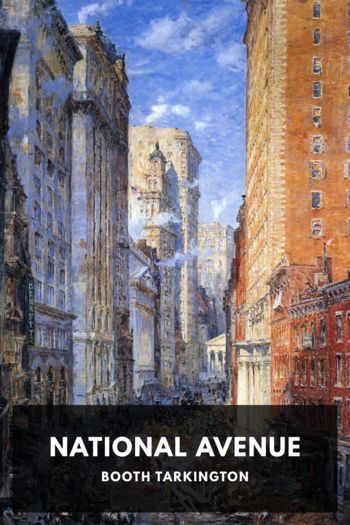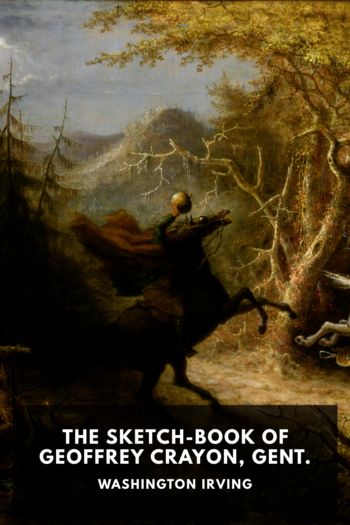Enchanted Evenings:The Broadway Musical from 'Show Boat' to Sondheim and Lloyd Webber by Block, Geoffrey (good story books to read .TXT) 📕

Read free book «Enchanted Evenings:The Broadway Musical from 'Show Boat' to Sondheim and Lloyd Webber by Block, Geoffrey (good story books to read .TXT) 📕» - read online or download for free at americanlibrarybooks.com
Read book online «Enchanted Evenings:The Broadway Musical from 'Show Boat' to Sondheim and Lloyd Webber by Block, Geoffrey (good story books to read .TXT) 📕». Author - Block, Geoffrey
81. Gottlieb, “The Music of Leonard Bernstein,” 26.
82. Bernstein’s manuscript for the Prologue opens with the “hate” motive (A-D-G), bracketed and labeled “optional curtain music.” The Broadway cast album retains this introduction, and in the film version, the “hate” motive is used effectively at the outset and at other strategic moments as the Jet’s warning whistle. The “hate” motive also appears unaltered in the “Cool” fugue where it joins the first and third “Somewhere” motives.
83. In the album jacket notes of the soundtrack, Hollis Alpert makes the following point: “With the intermissions between acts eliminated, one rising line of tension, from beginning to end, was required. The neatest solution, resulting in almost no change in the text, was the juxtaposition of musical numbers” (Columbia OS 2070). Thus, in dramatic contrast to most movie versions of hit Broadway shows, the makers of the West Side Story film made a valiant attempt to retain all of the music and to preserve the dramatic integrity, if not the ordering, of the Broadway original. Ironically, when West Side Story was first released, theaters, deprived of a B-movie second feature due to the length of the main event, thwarted the intentions of the film’s creators by inserting an intermission as a concession to the concessionaires. Following the numbers in the vocal score and the online website, the order in the film version is as follows: Nos. 1–5, 7–6, 14, 12, 9–11, 13, 8, and 15–17.
84. The final measures of Bernstein’s musical bears a striking—and identically pitched—resemblance to the apotheosis of the central character on the final notes of Stravinsky’s Petrushka (1911).
85. The CD reissued in 1992 restores the Broadway ending in the previously unreleased “Finale” (Sony SK 48211).
86. In the reissued CD, the previously released End Credits restored the three tritones that accompanied the film.
87. Swain, The Broadway Musical, 243. See also Stempel, “Broadway’s Mozartean Moment,” 54.
Chapter 14: Stage vs. Screen (2) After Oklahoma!
1. Among her many roles Moreno played the waitress in “It’s an Art” from the 1982 American Playhouse broadcast of Working in 1982 and dubbed the voice of Carmen Sandiego in the television series Where in the World Is Carmen Sandiego?
2. Gerald Mast, Can’t Help Singin,’ 217 and 216.
3. Thomas S. Hischak, Through the Screen Door, 153–54.
4. Bruce Babington and Peter William Evans, Blue Skies and Silver Linings, 187–204 (quotations on 197 and 204).
5. One interesting addition is when Billy’s responds to Mrs. Mullin’s accusation that his attentions to Julie have spoiled the good name of her carousel by accusing Mrs. Mullin herself of giving the enterprise a bad name the day she acquired it. For ’50s audiences who may not know what a chippie is, the word is replaced by its modern equivalent, slut.
6. See chapter 9 for a discussion of the Julie and Carrie Sequence and the Bench Scene.
7. Like many recordings of popular songs of the era, the “June” chorus is heard before its verse.
8. Mast, Can’t Help Singin,’ 217.
9. “Hugh Jackman Updates Carousel Remake,” November 13, 2006, www.firstshowing.net/2006/11/13/hugh-jackman-updates-carousel-remake/.
10. Porter himself did to Shakespeare what new lyric writers frequently did to Porter throughout the film when he changed Shakespeare’s “Then vail your stomachs, for it is no boot / And place your hands below your husband’s foot” to “So wife, hold your temper and meekly put / Your hand ‘neath the sole of your husband’s foot” in Porter.
11. A. Scott Berg, Goldwyn, 470.
12. Ibid., 470.
13. Even before the age of twenty Simmons gained exposure in the role of Estella in Great Expectations (1946) and Ophelia in Laurence Olivier’s Hamlet (1948). In the years before Guys and Dolls she had leading roles in Androcles and the Lion and The Robe in 1953 and played opposite Brando’s Napoleon in Desiree in 1954. After Guys and Dolls, her major film role was probably that of Sister Falconer in Elmer Gantry (1960).
14. Steve Sondheim, “‘Guys and Dolls,’” 524–25.
15. Ibid., 525.
16. In the years between the stage and film versions of My Fair Lady, Beaton had designed the costumes and sets for Lerner and Loewe’s Academy Award–winning film Gigi (1958).
17. Mast, Can’t Help Singin,’ 289.
18. Cast aside as the film Eliza, Andrews accepted the consolation prize role of Mary Poppins and earned eternal vindication when she took home the Best Actress Oscar and Hepburn was not even nominated. The next year Andrews starred in the popular and acclaimed film musical, The Sound of Music.
19. Lerner, On the Street Where I Live, 171.
20. Ibid.
21. “Keira Knightley is My Fair Lady,” June 6, 2008, www.comingsoon.net/news/movienews.php?id=45737.
22. With the exception of the winning costume designer and the quartet of orchestrators, most of the hardworking craftspeople honored are unknown other than to insiders in the field. This footnote will honor their substantial contributions to this technically brilliant film: Art Direction (Victor A. Gangelin); Cinematography (Daniel L. Fapp); Costumes (Irene Sharaff); Film Editing (Thomas Stanford); Scoring (Saul Chaplin, Johnny Green, Sid Ramin, and Irwin Kostal); and Sound Mixing (Gordon E. Sawyer and Fred Hynes).
23. See for example, Sondheim, “Theater Lyrics,” 84–85.
24. Laurent, Original Story by, 347–48.
25. The AFI also placed West Side Story as No. 41 on its “Top 100 American Movies of the Last 100 Years,” compiled in 1998. The only musicals ahead of West Side Story on the list were The Wizard of Oz at No. 6 and Singin’ in the Rain at No. 10. The other seven film musicals on the AFI list, which include two animated features and a biopic, were Snow White and the Seven Dwarfs (49), The Sound of Music (55), Fantasia (58), An American in Paris (68), The Jazz Singer (90), My Fair Lady (91), and Yankee Doodle Dandy (100).
Chapter 15: Sweeney Todd and Sunday in the Park with George
1. After Merman’s departure, Gypsy received several acclaimed revivals and films that highlighted a staggering array of luminous stars, including Rosalind Russell (Warner Bros. Film, 1962), Angela Lansbury (West End and Broadway,





Comments (0)